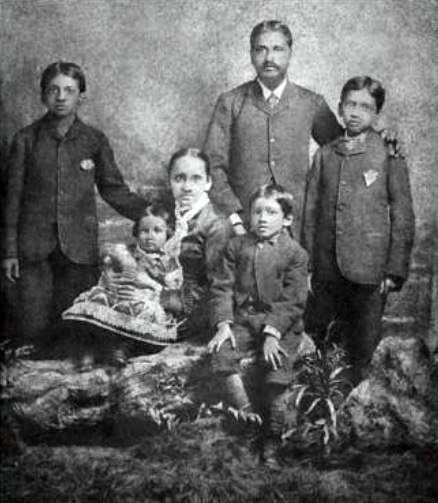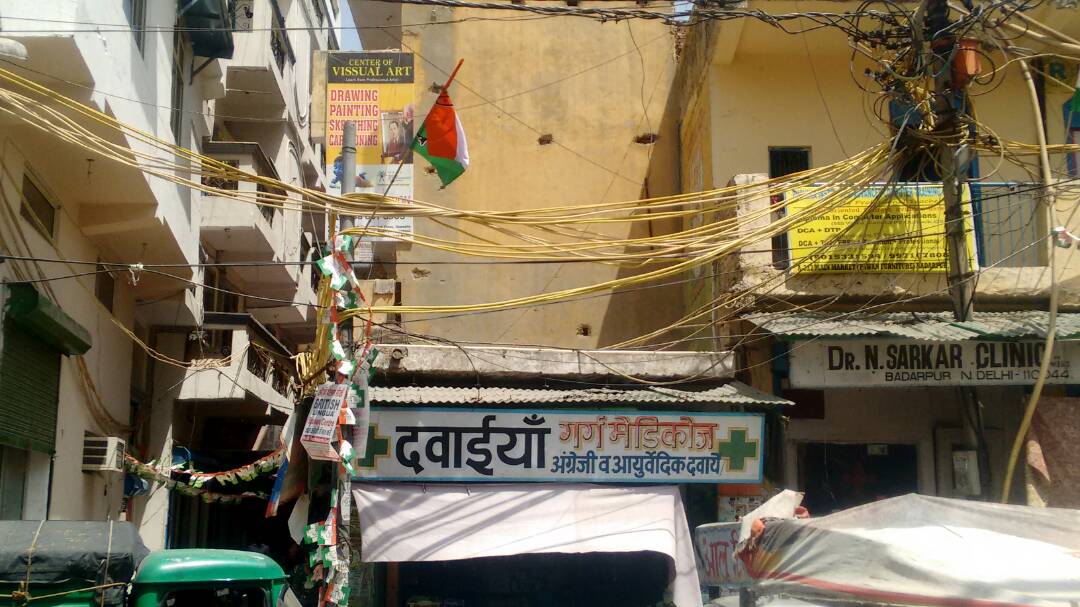|
Aurobindo Marg
Sri Aurobindo Marg or Aurobindo Marg, is an important South Delhi north-south arterial road connecting historic Safdarjung's Tomb to Qutab Minar. The road is named for Sri Aurobindo, Sri Aurobindo Ghosh; the Delhi campus of Sri Aurobindo Ashram is located on the road. The road was originally known as Mehrauli Road. The road is a primary conduit for traffic from North Delhi and Central Delhi, including the commercial hub of Connaught Place, New Delhi, Connaught Place, to points south and southwest of Delhi, including Gurgaon. The stations of Delhi Metro, Jor Bagh, INA, AIIMS and Green Park (Yellow Line) lie on this road. Major intersections The northern terminus of Aurobindo Marg is located at Safdarjung's Tomb. At the southern end, Aurobindo Marg terminates near the Lado Sarai bus terminal. Major intersections on Aurobindo Marg include, from north to south, include: *The northern terminus, dividing into Safdarjung Road heading northwest, Tughlaq Road heading directly north, ... [...More Info...] [...Related Items...] OR: [Wikipedia] [Google] [Baidu] |
Aurobindo Road Near Hauz Khas, New Delhi
Sri Aurobindo (born Aurobindo Ghose; 15 August 1872 – 5 December 1950) was an Indian philosopher, Modern yoga gurus, yogi, maharishi, poet, and Indian nationalist. He was also a journalist, editing newspapers such as ''Vande Mataram''. He joined the Indian independence movement, Indian movement for independence from British Raj, British colonial rule, until 1910 was one of its influential leaders, and then became a spiritual reformer, introducing his visions on human progress and spiritual evolution. Aurobindo studied for the Imperial Civil Service, Indian Civil Service at King's College, Cambridge, King's College, Cambridge, England. After returning to India he took up various civil service works under the Maharaja of the Princely state of Baroda State, Baroda and became increasingly involved in nationalist politics in the Indian National Congress and the nascent revolutionary movement in Bengal with the Anushilan Samiti. He was arrested in the aftermath of a number ... [...More Info...] [...Related Items...] OR: [Wikipedia] [Google] [Baidu] |
Prithviraj Road
Prithviraj Road (Hindi: पृथ्वीराज मार्ग, Urdu: پرتھوی راج مارگ ''Pṛthvīrāj Mārg'') is one of the historic & influential roads of New Delhi. It houses the most elite residences of major people of India. North End It stretches from the Taj Mansingh Hotel at the junction of Man Singh Road, Dr APJ Abdul Kalam Road, Humayun Road, Shahjahan Road, a road to Khan Market. South End It stretches up to the junction of Sri Aurobindo Marg Road, Safdarjung road and Tughlaq road. This is near Safdarjung's Tomb. Important buildings *Rajasthan House *Meghalaya House * Jindal House *J&K House *Official Language institution, or Kendriya Hindi/ Rajbhasha Sansthan * L.K.Advani's house: 30, Prithviraj Road. *Cabinet Secretary's earmarked residence: 32, Prithviraj Road. Crossings *Dr APJ Abdul Kalam Road Dr APJ Abdul Kalam Road formerly, Aurangzeb Road is a road in New Delhi, India. It lies at the north-east end, stretching from the 'Taj Mansingh Ho ... [...More Info...] [...Related Items...] OR: [Wikipedia] [Google] [Baidu] |
Airports Authority Of India
The Airports Authority of India, or AAI, is a public sector enterprise under the ownership of the Ministry of Civil Aviation, Government of India. It is responsible for creating, upgrading, maintaining, and managing civil aviation infrastructure in India. It provides Communication Navigation Surveillance/Air Traffic Management (CNS/ATM) services over Indian airspace and adjoining oceanic areas. AAI is currently managing a total of 137 airports, including 34 international airports, 10 Customs Airports, 81 domestic airports, and 23 Civil enclaves at defense airfields. AAI also has ground installations at all airports and 25 other locations to ensure the safety of aircraft operations. AAI covers all major air routes over Indian landmass via 29 Radar installations at 11 locations along with 700 VOR/DVOR installations co-located with Distance Measuring Equipment (DME). 52 runways are provided with Instrument landing system (ILS) installations with Night Landing Facilities at most o ... [...More Info...] [...Related Items...] OR: [Wikipedia] [Google] [Baidu] |
Rajiv Gandhi Bhawan
Rajiv Gandhi Bhawan is the corporate headquarters of Airports Authority of India (AAI). AAI which functions under the Ministry of Civil Aviation and manages most of the airports in India. The Indian Ministry of Civil Aviation is co-located in the same building. Mehro Consultants was involved in the design of the building. It has been used as a metonym for the Ministry of Civil Aviation.Seth, Rabindra. ''Tourism In India: An Overview'' (2 Vols.). Gyan Publishing House, 1 January 2005. , 9788178353289. p153 "Open-skies continues to be a dirty word at Rajiv Gandhi Bhawan." It is named after Rajiv Gandhi. Design of the building The building has a unique plan. This can be seen in the picture opposite, showing the aerial view as seen from the satellite. This building is on the Aurobindo Marg, with Safdarjung's Tomb adjacent on the right-hand side and the Aero Club of India on the left, and near Safdarjung Airport Safdarjung Airport is an airport in New Delhi, India, in the Sa ... [...More Info...] [...Related Items...] OR: [Wikipedia] [Google] [Baidu] |
Safdarjung Airport
Safdarjung Airport is an airport in New Delhi, India, in the neighbourhood of the same name. Established during the British Raj as Willingdon Airfield, it started operations as an aerodrome in 1929, when it was India's second airport after the Juhu Aerodrome in Mumbai. It was used extensively during the Second World War as it was part of the South Atlantic air ferry route, and later during Indo-Pakistani War of 1947. Once situated on the edge of Lutyens' Delhi, today, it has the entire city of New Delhi around it. It remained the city's main airport until 1962, when operations shifted to Palam Airport completely by the late 1960s, as it could not support the new bigger aircraft such as jet aircraft. The ''Delhi Flying Club'' was established here in 1928 with two de Havilland Moth aircraft named ‘Delhi’ and ‘Roshanara’. The airport functioned until 2001, however in January 2002, due to security considerations in the post 9/11 scenario, the government closed the airport ... [...More Info...] [...Related Items...] OR: [Wikipedia] [Google] [Baidu] |
Lodhi Mosque At Adh Chini
Lodhi may refer to: * Lodi (Pashtun tribe), a Batani Pashtun (Ghilzai) tribe mainly found in Afghanistan and Pakistan * Lodhi dynasty of Delhi Sultanate * Lodhi Colony, a residential colony in South Central part of New Delhi * Lodhi (caste), a Hindu community in India * Lodhi Road, Delhi * Lodhi language, a Austroasiatic spoken language of India. * Lodha Muslims, a tribal or Adivasi community found in the state of West Bengal in India. * Lodha people, a tribal community of Odisha and West Bengal. People * Azhar Lodhi, newscaster and commentator at the Pakistan Television Corporation * Faheem Khalid Lodhi, Pakistani-Australian architect * Lodhi (rapper), Pakistani hip-hop artist and desi rapper * Maleeha Lodhi, journalist, academic and diplomat from Pakistan * Shaista Lodhi, a Pakistani actor, director and host. He made his film debut with Raasta * Sultanpur Lodhi, a city in the Indian state of Punjab See also * Lodi (other) * Lohri ''Lohri'' is a po ... [...More Info...] [...Related Items...] OR: [Wikipedia] [Google] [Baidu] |
National Highway 2 (India)
National Highway 2 is a national highway in India that runs from Dibrugarh in Assam to Tuipang in Mizoram. This national highway passes through the Indian states of Assam, Nagaland, Manipur and Mizoram. This national highway is long. Before renumbering of national highways, NH-2 was variously numbered as old national highways 37, 61, 39, 150 and 54. Route description NH2 connects Dibrugarh, Sivasagar, Amguri, Mokokchung, Wokha, Kohima, Imphal, Churachandpur, Seling, Serchhip, Lawngtlai and Tuipang. Major intersections : Terminal near Dibrugarh. : near Moranhat : near Sivasagar : near Jhanji. : near Chantongia. : near Mokokchung. : near Mokokchung : near Mokokchung : near Kohima : near Tadubi : near Maram : near Imphal : near Imphal : near Imphal : near Imphal : near Churachandpur : near Vertek : near Seling : near Theriat : near Lawngtlai : near Venus Saddle Asian Highways Imphal to Kohima stretch of National Highway 2 is part of Asian Highway 1 ... [...More Info...] [...Related Items...] OR: [Wikipedia] [Google] [Baidu] |
Mehrauli-Badarpur Road
Badarpur is a historic town in South East Delhi district in Delhi. Badarpur is famous for its Badarpur Border bus terminal. It is also serviced by Badarpur Border station of Delhi Metro on Violet Line. The bus terminal and metro station have been renamed by Delhi Government as 'Badarpur border'.There is another bus terminal from Faridabad Side namely Badarpur border Bus terminal from Haryana roadways and UP parivahan buses and Echo vans goes for Southern Haryana and Western Uttar Pradesh. It is situated on Mathura Road joining Delhi with Mathura and Agra, on NH 2 (Delhi-Kolkata) National Highway, a part of the historic Grand Trunk Road that once joined Bengal to Kabul. It is the starting point for the on the "Mehrauli- Badarpur Road" that passed through Tughlaqabad, Khanpur, Tigri and Saket towards Mehrauli. The Delhi Faridabad Skyway elevated highway also opened at the starting of Mehrauli- Badarpur Road. Badarpur is also home to the Badarpur Thermal Power Station (BTPS ... [...More Info...] [...Related Items...] OR: [Wikipedia] [Google] [Baidu] |
Mehrauli
Mehrauli is a neighbourhood in South Delhi, a district of Delhi in India. It represents a constituency in the legislative assembly of Delhi. The area is close to Gurgaon and next to Vasant Kunj. History Mehrauli is one of the seven medieval cities that make up the present state of Delhi. The Lal Kot fort was constructed by the Tomar chief Anangpal I around 731AD and expanded by AnangPal II in the 11thcentury, who shifted his capital to Lal Kot from Kannauj.The Tomars were defeated by the Chauhans in the 12th century. Prithviraj Chauhan further expanded the fort and called it Qila Rai Pithora. He was defeated and killed in 1192 by Mohammed Ghori, who put his general Qutb-ud-din Aybak in charge and returned to Afghanistan. Subsequently in 1206, after the death of Mohammed Ghori, Qutubuddin enthroned himself as the first Sultan of Delhi. Thus Delhi became the capital of the Mamluk dynasty of Delhi ( Slave dynasty), the first dynasty of Muslim sultans to rule over northe ... [...More Info...] [...Related Items...] OR: [Wikipedia] [Google] [Baidu] |



